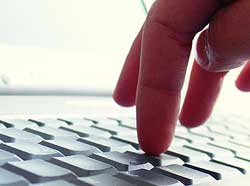 Currently, the development of personal computer monitoring applications is quite prevalent. You can use them to monitor your children’s activities or uninvited guests. However, if you find yourself on an unfamiliar PC that has this software installed, all your actions will be recorded.
Currently, the development of personal computer monitoring applications is quite prevalent. You can use them to monitor your children’s activities or uninvited guests. However, if you find yourself on an unfamiliar PC that has this software installed, all your actions will be recorded.
The mechanism of these applications is to faithfully track keystrokes and take screenshots on the computer being used or remotely (within a LAN or over the Internet), as long as that machine also has a corresponding program installed. Some even have the capability to monitor all incoming and outgoing data in chat applications, email…
At this point, the boundary between the concept of “utility” for PC control and spyware has become very thin. Spyware is something that the distributor must conceal within a downloadable program, waiting for the “victim” to download it. It will automatically infiltrate the computer system, steal information, and send it back to a server on the Internet. In contrast, the “utility” for monitoring is a legitimate application, publicly listed among the software developed for PCs, and thus antivirus and spyware programs consider it a “trusted entity.” However, its “reverse” functionality can be exploited by someone intending to monitor another person’s computer.
For example, software listed on download.com, a popular site by CNet, such as XT Spy, e-Surveiller, All in One Keylogger… proves very effective if you want to see who has used your computer or to monitor what your children are doing on it. But if these programs are installed on public computers, such as in internet cafes, users risk exposing a massive amount of sensitive information.
It is worth noting that this type of software does not appear in the Task Manager or the Control Panel > Add or Remove Programs. Therefore, even if a user is aware of it, they cannot completely uninstall it without knowing the password. Some programs even eliminate the function of displaying the Task Manager.
Thus, if you feel uneasy about browsing the web somewhere, you should take preliminary measures to check for such programs in the Start menu or the Program Files directory and manually delete them (remember to select the option to show hidden files). After that, go to the Recycle Bin and select the Empty function. The program’s missing files will no longer be executable.
Thuy Huong


















































